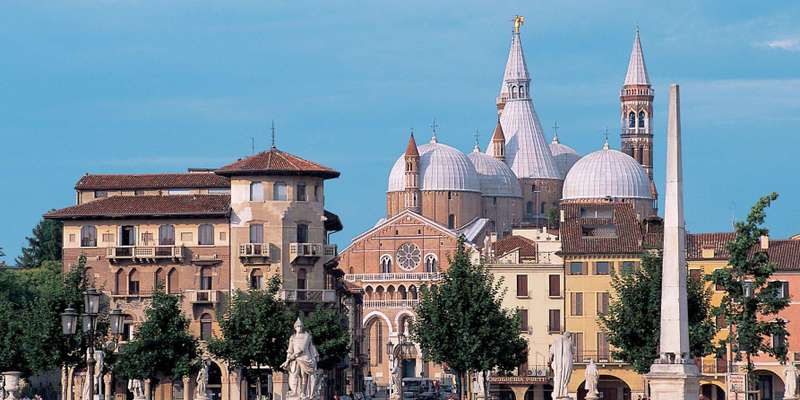- Home
- Useful Tips
- Padua's most impressive...
Standing before Padua's medieval churches, many travelers experience architectural awe quickly followed by practical frustrations. Over 60% of visitors to the Basilica of Saint Anthony report spending more time navigating crowds than appreciating its famed facade, while hidden masterpieces like the Scrovegni Chapel often get overlooked in rushed itineraries. The challenge isn't finding remarkable churches - this UNESCO-rich city has dozens - but experiencing their intricate stonework and biblical carvings without museum-level ticket costs or shoulder-season queues. Morning light transforms the Baptistery's frescoed walls, yet most arrive when harsh midday sun flattens their depth. Local artisans still repair the same marble saints your guidebook calls 'timeless,' yet modern visitor logistics rarely support truly timeless appreciation. These aren't just photo stops, but portals to 14th-century devotion where every sculpted apostle tells a story most hurried tourists never hear.


Decoding Padua's facade symbolism without a tour guide
The animal carvings on Santa Maria dei Servi's portal aren't random decorations - they're a medieval sermon in stone. Local friars still point out how the lion represents Mark's Gospel while the ox symbolizes Luke, details most self-guided visitors miss. At the Basilica del Carmine, the recently cleaned rose window hides a secret: its twelve petals mirror the apostles, a design choice clearer when afternoon backlighting makes them glow. Don't just photograph the facade of the Eremitani Church; stand where the morning sun rakes across its surface to see how light reveals the Virtues carved into niches. These visual stories were meant to educate illiterate medieval worshippers, and with some context, they'll speak to you too. The adjacent Museo Civico offers free pamphlets explaining common symbols, or time your visit for the 10am volunteer-led facade walk (donations welcome).
Seeing Giotto's frescoes without Scrovegni Chapel crowds
While everyone queues for the Scrovegni Chapel's interior, smart travelers know its exterior tells equally compelling stories. The brick facade's seemingly simple lines actually demonstrate revolutionary 14th-century engineering - note how the roofline's slight curve counters optical illusion. Come at 8:15am when golden light hits the Last Judgment mosaic above the door, and you'll have this view practically to yourself. For a free alternative, the nearby Chiesa degli Eremitani displays similar fresco techniques by Giotto's students. Their facade's surviving fragments show how color choices changed between biblical scenes - look for the deeper blues used for Marian imagery. Local art students often give informal talks here on weekends; check the university bulletin board by the west entrance.
Budget-friendly ways to experience Padua's sacred art
Padua's church facades offer free masterclasses in medieval art if you know where to look. The Basilica of Saint Anthony waives its usual interior fee before 8:30am, when soft light perfectly illuminates Donatello's exterior bronzes. At Santo Stefano, the sundial on its facade still accurately tells solar time - visit at noon to see the shadow align with the martyr's feast day marker. For €1, the Diocesan Museum provides a map decoding all major facade elements within walking distance. Better yet, attend one of the free 'Art at Twilight' events (first Fridays monthly) when projected lighting enhances nighttime facade details invisible by day. Even simple tricks matter: the Baptistery's Creation scenes show best when viewed from the left side benches, avoiding glare.
Local secrets for photographing Padua's churches like a pro
Professional photographers wait for 'Padua gold hour' - that 20-minute window when setting sun sets the Pietra di Nanto stone facades aflame. For the Basilica of Saint Anthony, this happens around 5:45pm in summer, transforming its Byzantine domes into a honey-colored masterpiece. At the Oratory of San Giorgio, position yourself by the newsstand across the street to frame the entire facade with its reflection in the office building's glass. Rainy days reveal hidden benefits: wet cobblestones create natural leading lines to the Chiesa di San Gaetano's doorway sculptures. Many churches prohibit tripods, but the stone bench outside Santa Caterina provides perfect stabilization for twilight shots. Local photographers swear by a polarizing filter to cut glare from the Carrara marble used on high-status facades like the Duomo.



